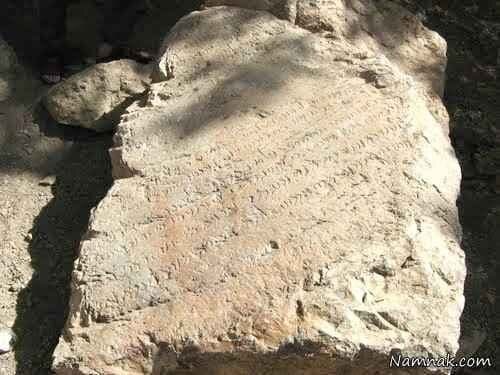Sassanid bas-relief to be installed on original place atop steep canyon

TEHRAN – Fars province’s tourism directorate is set to reinstall a massive bas-relief, attributed to the Sassanid king Shapur I, on its original place near the entrance of a cave atop a steep canyon in southern Iran.
“This magnificent bas-relief is to be moved to its original location near the mouth of a cave on the face of Tangeh Boraq (Boraq Canyon),” the provincial tourism chief, Hadi Shahdoost Shirazi, said on Tuesday.
The project is being carried out under the supervision of top experts affiliated with the UNESCO-registered Persepolis, the official noted.
Over the years, the difficulty of access to the original location hampered [adequate] protection of the site and paved the way for illegal diggers and antique traders to harm the site several times, the official explained.
However, the bas-relief was previously transferred to [an appropriate place] to undergo restoration and further protection, he added.
The official noted the heavy weight of the inscription, which is about seven tons, and the limitation of using simple means of transportation on the slope of the valley, such as scaffolding and hand cranes, are among the difficulties in the process of transferring the inscription.
One of the hidden gems in the southern province, Tangeh Boraq has situated about 190 km from Shiraz. The canyon is named after a nearby village located to the south of the canyon.
Here a roaring river has plunged through the high-rising rocks of the canyon and created the narrow chasm of Tangeh Boraq, which is sometimes referred to as “an oasis of incomparable beauty”.
From a touristic point of view, the canyon, which is situated some 1940 meters above sea level, can be a refuge from the burning summer heat. The walls of this slot canyon, rising to a height of more than a hundred meters, are coated with moss.
The striking cave is sighted nestled on the cliffs, once formed by the tributaries of the river. It is a cozy limestone cave with natural decorations of stalactites and stalagmites. The flow of the river through the rocks also creates mesmerizing small waterfalls and natural lakes.
At the time of Shapur I (reigned 241 CE–272), the Sassanid Empire stretched from Sogdiana and Iberia (Georgia) in the north to the Mazun region of Arabia in the south; in the east, it extended to the Indus River and in the west to the upper Tigris and Euphrates river valleys.
According to UNESCO, the ancient cities of Ardashir Khurreh and Bishapur include the most significant remaining testimonies of the earliest moments of the Sassanid Empire, the commencement under Ardashir I, and the establishment of power under both Ardashir I and his successor Shapur I.
In 2018, UNESCO added an ensemble of Sassanian historical cities in southern Iran -- titled “Sassanid Archaeological Landscape of Fars Region”-- to its World Heritage list.
The ensemble is comprised of eight archaeological sites situated in three geographical parts of Firuzabad, Bishapur, and Sarvestan. It reflects the optimized utilization of natural topography and bears witness to the influence of Achaemenid and Parthian cultural traditions and of Roman art, which later had a significant impact on the architecture and artistic styles of the Islamic era.
“The architecture of the Sassanid monuments in the property further illustrates early examples of construction of domes with squinches on square spaces, such as in the Chahar-Taq buildings, where the four sides of the square room show arched openings: this architectural form turned into the most typical form of Sassanid religious architecture, relating closely to the expansion and stabilization of Zoroastrianism under Sassanid reign and continuing during the Islamic era thanks to its usage in religious and holy buildings such as mosques and tombs,” the UN cultural body said in its website.
The Sassanid archaeological landscape also represents a highly efficient system of land use and strategic utilization of natural topography in the creation of the earliest cultural centers of the Sassanid civilization.
AFM

Leave a Comment